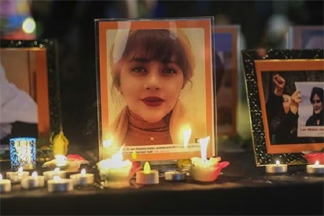
Tehran (TIP) : On September 16, 2022, Mahsa Amini died while in the custody of Iran‘s morality police after being arrested for not adhering to the country’s strict Islamic dress code. Her death ignited widespread outrage, and now, two years later, 34 Iranian women prisoners have begun a hunger strike, while many others are defying the hijab mandate to mark her anniversary.
In Tehran, a significant number of women are seen walking the streets without their mandatory Islamic headscarves, even after sunset. This defiance is particularly striking given the strict enforcement of Islamic dress codes since the 1979 Islamic Revolution. Women across Tehran, from affluent northern suburbs to working-class southern neighborhoods, are choosing to go unveiled, a bold move against the regime’s norms.
Despite the Iranian government’s severe crackdown on dissent, including house arrests and restrictions on Mahsa Amini’s parents, who are barred from holding memorial events, the protest movement remains resilient. Security in Saqqez, Amini’s hometown, has been intensified, with the local cemetery where she is buried being cordoned off.
Among the notable acts of defiance, 34 women inmates in Tehran’s Evin Prison have launched a hunger strike in solidarity with the broader protest movement. Prominent activists, such as Narges Mohammadi and Parivash Muslimi, are participating, hoping to draw international attention to Iran’s repressive policies.
The crackdown extends to social media, where women who post images without their hijabs face severe repercussions. One such woman, Alef, was arrested and tortured after sharing a photo of herself with her hair uncovered. Authorities have used drones and surveillance to monitor public spaces and penalize those who defy dress codes.
Despite recent promises from Iran’s reformist President Masoud Pezeshkian to ease restrictions, the ultimate authority still rests with Supreme Leader Ayatollah Ali Khamenei, who has firmly opposed any relaxation of hijab laws. However, the increasing number of women defying these regulations suggests a shift in public sentiment.
As the Women, Life, Freedom movement continues to grow, it represents a broader struggle for individual rights and freedoms in Iran. This movement, symbolized by the slogan “Jin, Jiyan, Azadi” (Woman, Life, Freedom), remains a powerful force despite ongoing repression. (NIE)





Be the first to comment